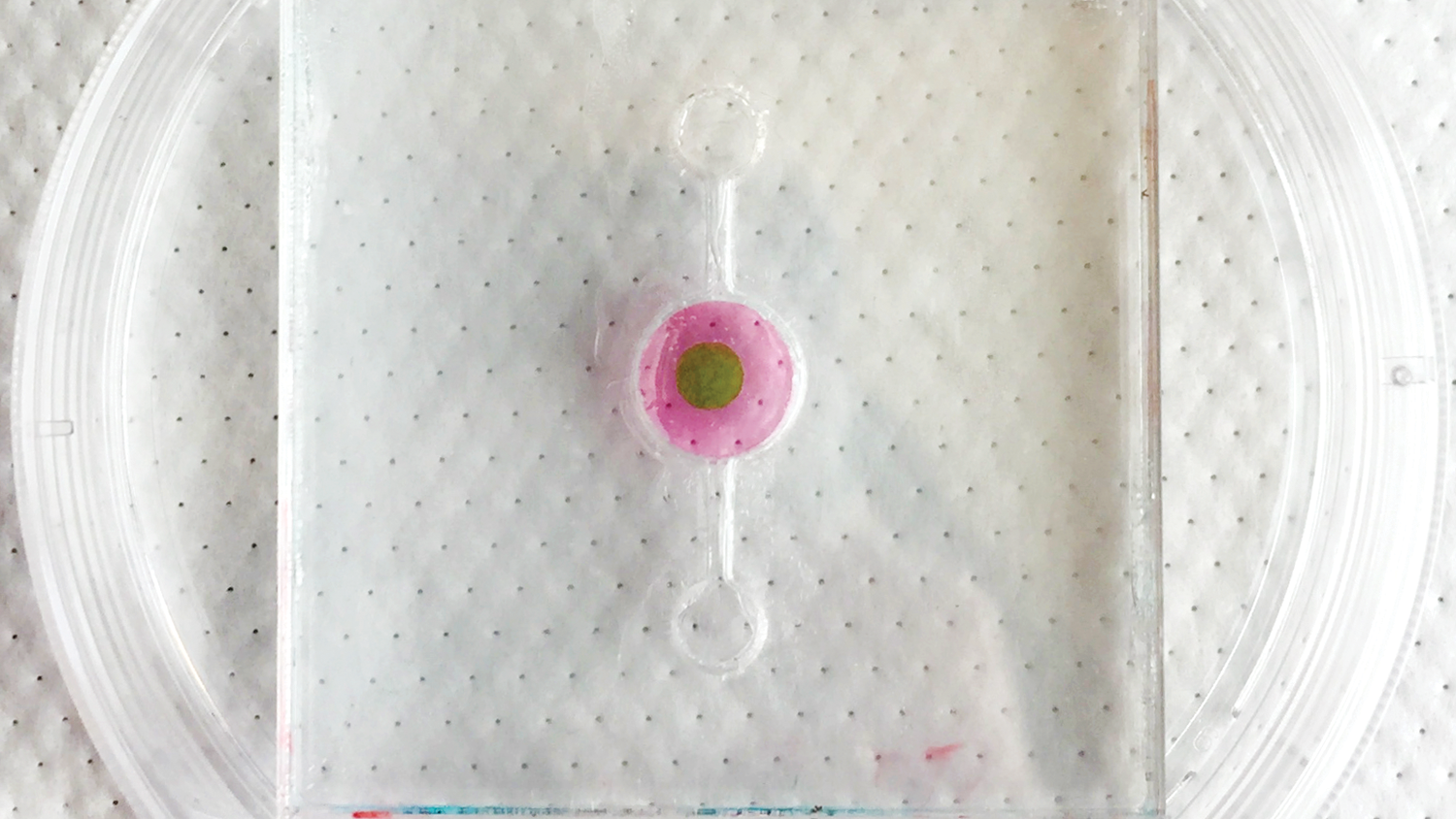Biosensor allows real-time oxygen monitoring for “organs on a chip”

A new biosensor allows researchers to track oxygen levels in real time in “organ-on-a-chip” systems, making it possible to ensure that such systems more closely mimic the functions of real organs. This is essential if organs on a chip are to achieve their potential in applications such as drug and toxicity testing.
The organ-on-a-chip concept has garnered significant attention from researchers for about a decade. The idea is to create small-scale, biological structures that mimic a specific organ function, such as transferring oxygen from the air into the bloodstream in the same way that a lung does. The goal is to use these organs on a chip to expedite high-throughput testing to assess toxicity or to evaluate the effectiveness of new drugs.
But while organ-on-a-chip research has made significant advances in recent years, one obstacle to the use of these structures is the lack of tools designed to actually retrieve data from the system.
“For the most part, the only existing ways of collecting data on what’s happening in an organ on a chip are to conduct a bioassay, histology, or use some other technique that involves destroying the tissue,” said Dr. Michael Daniele, corresponding author of a paper on the new biosensor and an assistant professor in the Department of Electrical and Computer Engineering (ECE) and in the UNC/NC State Joint Department of Biomedical Engineering (BME).
“What we really need are tools that provide a means to collect data in real time without affecting the system’s operation,” Daniele said. “That would enable us to collect and analyze data continuously and offer richer insights into what’s going on. Our new biosensor does exactly that, at least for oxygen levels.”
Oxygen levels vary widely across the body. For example, in a healthy adult, lung tissue has an oxygen concentration of about 15 percent, while the inner lining of the intestine is around zero percent. Oxygen directly affects tissue function — so if you want to know how an organ is going to behave normally, you need to maintain “normal” oxygen levels in your organ on a chip when conducting experiments.
“What this means in practical terms is that we need a way to monitor oxygen levels not only in the organ on a chip’s immediate environment, but in the organ on a chip’s tissue itself,” Daniele said.
First author on the paper is Kristina Rivera, a Ph.D. student in BME. The paper was co-authored by Ashlyn Young and Patrick Erb, Ph.D. students in BME; Vladimir Pozdin, a postdoctoral researcher in ECE; and Scott Magness, an associate professor in BME.
Return to contents or download the Spring/Summer 2019 NC State Engineering magazine (PDF, 13.7MB).
- Categories:


